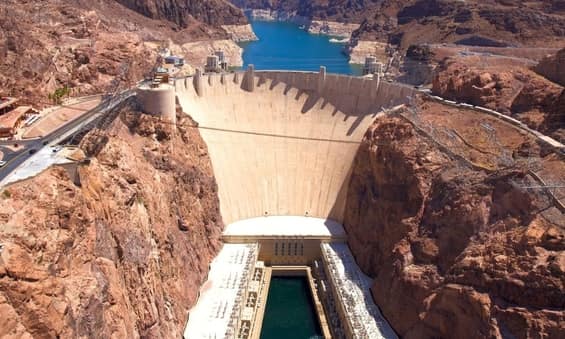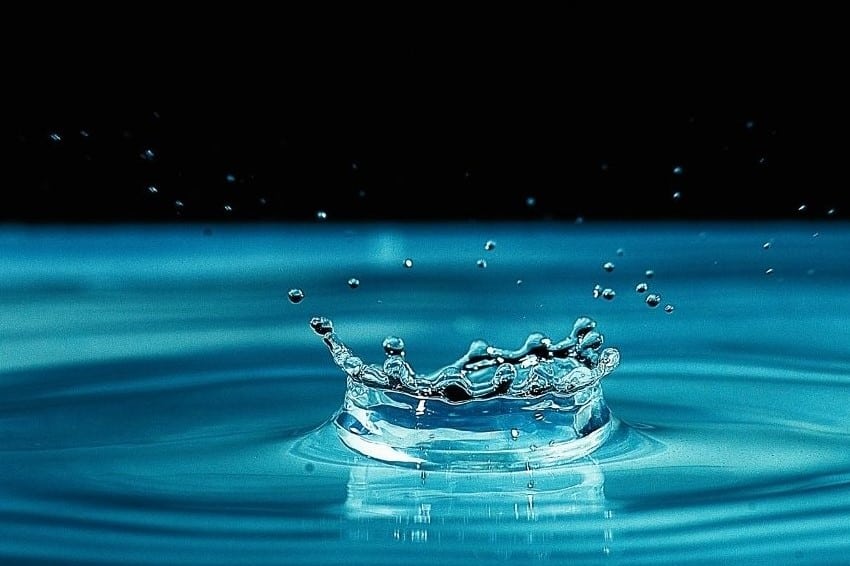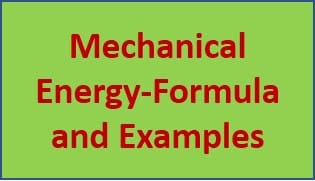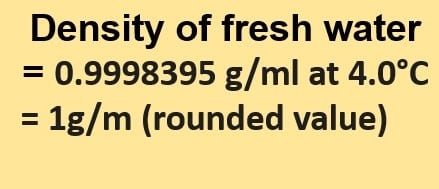Hydro turbines are equipment used in hydroelectric power plants to transport energy from flowing water to a rotating shaft in order to create electricity. These turbines rotate or spin in reaction to the injection of water into their blades.

Table of Contents
How Hydro Turbine Works?
Hydropower plants capture the energy of falling water to generate electricity. A turbine converts the kinetic energy of falling water into mechanical energy. Then a generator converts the mechanical energy into electrical energy via a generator. Most conventional hydroelectric plants include four major components:
- Water head: Raises the river’s water level to generate falling water. Controls the flow of water as well. The reservoir that forms is, in fact, a reservoir of stored energy (check gravitational potential energy topic).
- Turbine: The turbine spins due to the force of falling water pushing on the turbine’s blades. A water turbine is similar to a windmill, except that the energy is generated by falling water rather than wind. The kinetic energy of falling water is converted into mechanical energy by the turbine.
- Generator: Shafts and potentially gears connect the generator to the turbine, causing the turbine to spin as well. Converts the turbine’s mechanical energy into electric energy. Generators in hydropower plants operate in the same way as generators in other types of power plants do.
- Transmission lines: Conduct electricity from the hydropower plant to homes and businesses.
Types of Hydro turbine
There are two types of water turbine, the reaction hydro turbine, and the impulse hydro turbine.
Reaction Hydro Turbine
In reaction water turbines, the combined action of pressure and flowing water provides electricity. Water passes through the turbine, generating changes in pressure, velocity, and direction. Water flow creates pressure between the front and back of the blades, providing a reverse reaction force on the runner and, as a result, rotating torque to spin the runner. The energy contained in piped water is turned into mechanical or electrical energy as a result of these methods. The reaction turbine must be entirely enclosed and immersed in the water flow to contain the water pressure.
Impulse Hydro Turbine
The impulse turbine only uses the kinetic energy of water in impulse turbines. The velocity of a high-pressure water jet is altered using impulse turbines. Nozzles are utilized to transform the potential energy of high-pressure water into kinetic energy before it reaches the turbine blades. There is no pressure change at the turbine blades, thus the turbine does not require housing to operate. The turbine blades are pushed by a high-pressure water jet. The flow’s direction is altered. The ensuing change in momentum exerts a force on the turbine blades, causing the turbine to spin.
Summary
- The hydro turbine generates electricity by harnessing the energy of falling water.
- A turbine turns the kinetic energy of falling water into mechanical energy.
- The turbine’s mechanical energy is then converted into electrical energy via a generator.
- Reaction hydro turbine and impulse hydro turbine are two main types of hydro turbines.
Related Links
Power Units- The Basics
Definition of Work in Physics| Work Formula
Force | Definition, Unit, Types, Formula, and Applications
Potential Energy Definition and Formula
Isolated System Definition| Science
Energy Definition and Examples| Easy Science
Static Pressure| Definition, Meaning, and Examples
Frequently Asked Questions
1. How do turbines work?
In a turbine generator, a flowing fluid (water, steam, combustion gases, or air) pushes a series of blades on a rotor shaft. The force of the fluid on the blades spins/rotates the rotor shaft of a generator. The generator converts the mechanical (kinetic) energy of the rotor into electrical energy.
2. Is LNG used for power generation?
When LNG is re-gasified, it is utilized for a number of applications in the residential, commercial, and industrial sectors, including heating, cooking, producing power, and making a wide range of products. LNG may also be utilized to power heavy-duty and other types of vehicles. Please check another article “Liquified petroleum gas”.
3. How do hydro turbines work?
Hydropower plants generate electricity by extracting energy from falling water. The kinetic energy of falling water is converted into mechanical energy by a turbine. The mechanical energy from the turbine is then converted into electrical energy via a generator.
4. Is hydro electricity Green?
Hydroelectric power (hydro) is classified as renewable energy since it generates electricity using the kinetic energy of the Earth’s natural water cycle. Please check another interesting article “Carbon footprint”.
5. Why is Hydro better than solar?
Hydropower generates energy in a more steady and reliable manner than solar power. Solar power generation is most effective when the sun is at its brightest, which is usually around the middle of the day. Solar power systems have no more energy to draw from once the sunsets.
6. What is the carbon footprint of hydropower energy?
Hydropower has the fourth-lowest carbon footprint of any source of electricity. On a life-cycle basis, hydropower emits 24 grams of carbon dioxide (CO2) per kWh generated. It helps to mitigate climate change and offers a variety of environmental advantages, although it still emits some greenhouse gases.
7. What is energy density in physics?
The quantity of energy stored in a specific system or region of space per unit volume is referred to as energy density in physics.
8. How can we increase the efficiency of the Otto cycle?
The efficiency of an Otto engine can be improved by running it on lean fuel (which consumes additional air) or by increasing the compression ratio.
9. Why is thermal mass important for passive solar?
Thermal mass is an important and complementary component of passive solar design. Thermal mass refers to a material’s ability to receive, store, and release heat energy from the sun.
10. Do aerosols block sunlight?
Aerosols are microscopic particles that float in the Earth’s atmosphere. They have a cooling impact because they obstruct sunlight that would otherwise reach the globe.
11. How is static electricity useful for solar panels?
Researchers at MIT have invented a novel approach that utilizes static electricity to clear dust from solar panels, potentially saving 45 billion liters of water every year. Check the full article.
More Links
- BCl3 Lewis Structure in four simple steps - November 1, 2023
- PH3 Lewis Structure in four simple steps - October 8, 2023
- PF3 Lewis structure in four simple steps - September 24, 2023



